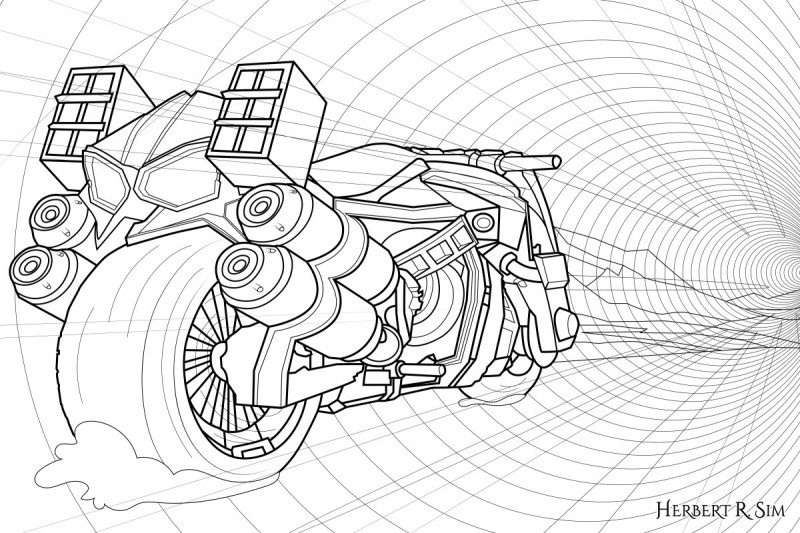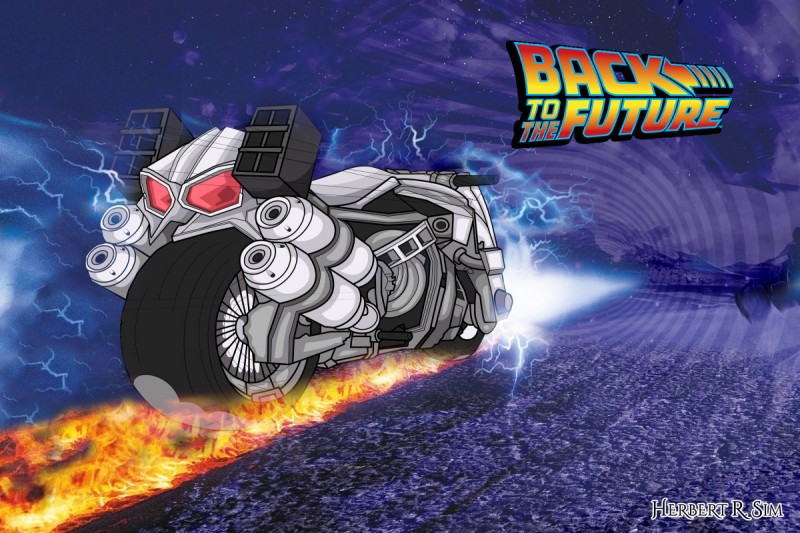
Referencing the designs of the ‘Time Machine’ car from ‘Back To The Future’ movie, I created this illustration.
Time is a fundamental element of our existence in the universe. It is something that is as old as, well, time. We all wish we had more control of it. Turn back the hands of time to do something differently, or take a peek into what the future holds for us.
Time travel is a concept that has been visited in numerous facets of pop culture. The 1985 science fiction Hollywood classic ‘Back to the Future’ featured a time travelling car and characters heading back and forth in time avoid unintentionally altering their lives forever.
Going further back to 1895, H.G. Wells in his novel, ‘The Time Machine’, wrote, “There is no difference between Time and any of the three dimensions of Space except that our consciousness moves along it”. He presciently added, “Scientific people…know very well that Time is only a kind of Space”.
But is time travel logically conceivable? Or are we just indulging in wishful thinking? Stephen Hawking, the world-renowned theoretical physicist, cosmologist and icon of science, certainly thinks it is worth considering. He postulated three possible paths to realising time travel.
Wormholes
Wormholes could be portals to the past or the future. In reality, wormholes are all around us, only that they are very tiny and too small to see. They occur in nooks and crannies in space and time. This refers to the notion that nothing is truly flat or solid. Look closely enough at anything and one will find holes and wrinkles in it. This basic physical principle even applies to time. Such wrinkles exist in the first three dimensions as we commonly know them – for instance, the length, width and height of an object. But this is also true of the fourth dimension – time.
Down at the smallest level of existence, smaller than molecules, smaller even than atoms, there is a place called the quantum foam. It is at this level where wormholes exist. Tiny tunnels or shortcuts through space and time constantly form, disappear and reform within this mysterious quantum world. Unfortunately, these real-life time tunnels are just a billion-trillion-trillionths of a centimetre across, obviously way too miniscule for a human to pass through.
This is where the notion of wormhole time machines leads as some scientists think it may be possible to capture a wormhole and enlarge it many trillions of times so it is large enough for a human or even a spaceship to enter.
Unfortunately, Hawkings thinks a wormhole time machine is not conceivable due to the phenomenon of feedback. Just like a microphone experiences feedback from having speakers too close to it and damaging the sound quality, the same would apply with a wormhole, but with radiation instead of sound. As soon as the wormhole expands, natural radiation from the past or future will enter it and cause a loop. This feedback mechanism will become so strong it destroys the wormhole. As such, a wormhole will not last long enough, or be safe enough, for it to be of use as a time machine.
Supermassive Black Hole
But fret not, there is another possibility premised on the notion that time flows at different speeds in different places which makes time travel into the future conceivable. This idea was first proposed by Albert Einstein over 100 years ago when he realised that matter drags on time and slows it down. The heavier the object, the more it drags on time.
In the centre of the Milky Way, 26,000 light years from Earth, is the heaviest object in the galaxy – a supermassive black hole which contains the mass of four million suns crushed down into a single point by its own gravity. The closer one gets to this black hole, the stronger the gravity. Not even light can escape it if close enough. A black hole like this has such a dramatic effect on time that slows it down far more than anything else in the galaxy. That makes it a natural time machine, as Hawking put it.
Hypothetically, a spaceship might be able to take advantage of this phenomenon by orbiting the black hole. A space agency monitoring the mission from Earth would observe that each full orbit took 16 minutes. However, for the crew on board the spaceship and close to the black hole, time would be slowed down. The crew’s time would be slowed down by half. So for every 16-minute orbit, they would only experience eight minutes of time.
Now, if the ship and its crew circled the black hole for five years as they experience it, ten years would have passed elsewhere. When they got home to Earth, everyone on Earth would have aged five years more than they had.
186,000 miles per second
To Hawking, the last and best hope of realising a time machine would lie in speed. This entails travelling close to the cosmic speed limit – 186,000 miles per second – also known as the speed of light. Because nothing can exceed light speed, one of the most established scientific principles, travelling at near the speed of light can transport one to the future.
Something has been built that can put that theory to the test – the world’s largest particle accelerator at CERN (European Organization for Nuclear Research) in Geneva, Switzerland. Through a circular tunnel that is 16 miles long and built deep underground, the Large Hadron Collider, as it is called, is able to get streams of tiny particles to travel at near the speed of light.
Like the particles, if a spaceship is capable of travelling at near the speed of light, a single day on board it could be equivalent to a whole year of time on Earth. Much like the case of travelling near a black hole, a one day journey to a certain point in the universe at the spend of light could mean arriving at the destination one year later.
Be it wormholes, black holes or going light speed, one must bear in mind that the majority of discourse about time travel is very much theoretical currently. Will mankind one day realise the holy grail of time travel capability? One time will tell.

Notice the two additional exhaust boxes above the exhaust pipes, similar to that of the “Back To The Future” movie’s time machine car.
https://pafipemkobandaaceh.org/
https://pafipemkonusantara.org/
https://pafipemkosorong.org/
https://pafipemkopekanbaru.org/
https://pafipemkomobagu.org/
https://pafipemkopadangpanjang.org/
https://pafipemkopayakumbuh.org/
https://pafipemkosawahlunto.org/
https://pafipemkolubuklinggau.org/
